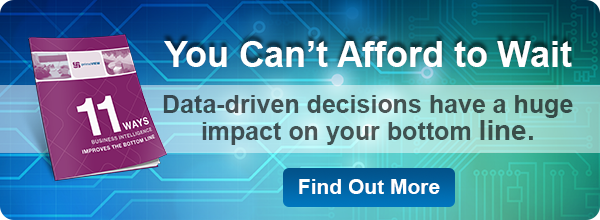 A revisit to the world of data mining
A revisit to the world of data mining
Simply stated, to data mine is to analyze data from a variety of perspectives and to convert the findings into valuable (or actionable) information in the form of graphs, charts, and/or tables. This information identifies previously hidden or difficult to spot performance patterns to help providers improve clinical outcomes, increase revenues, convert those revenues to cash, and cut costs. But let’s pause for a brief moment and go just one step deeper
What is data and data warehousing?
We throw the term, “data”, around a lot, but what is it? Data embraces any and all facts, numbers, and texts which computers can process. If your organization uses computers, you have data – lots of it. But more than likely, your data resides in disparate data locations existing in the clinical, financial, time and attendance, procurement, etc. applications your organization uses. More than likely, these applications don’t speak to each other, impeding performance pattern discovery. Data warehousing gives data meaning.
OK. So what is a data warehouse? Data warehousing centralizes data management and retrieval of all of your organization’s data. Just as the name implies, it is a virtual (in the cloud) or physical (a data server) location where you can store and manage data in a multidimensional database system. Ideally, the warehouse can automatically extract or pump data from diverse data repositories. A physical warehouse has an inventory which is only useful if you can find and combine what you are looking for to achieve your intended ends. For data warehousing to be useful, you need software to help you effectively mine all of your data to help you achieve your organizational goals
Data mining and long term care – bringing it home
The “spectrum of care” is a term used for many years to describe various health care delivery models and their relationship one with another. Just look at Long Term and Post-Acute Care – Skilled Nursing Facilities, Home Care and Hospice, Long Term Acute Care Hospitals, Inpatient Rehabilitation Facilities, Assisted Living Facilities, PACE (Program of All-inclusive Care for the Elderly), and Independent Care. Yet, we are witnesses to possibly a major shift from provider silos to a person-centric delivery model. It embodies only one healthcare segment, the individual. For that to happen, data warehousing is a must
But for now, whether the person-centric model happens sooner or later, your organization needs to know if you are the right setting for the right services at the right time at the right acuity and at the right cost. In other words, data mining can have meaning for your organization right now. It goes both ways - what the payer wants to pay and what outcomes you can afford to deliver with that paymen
Dashboards – the one-stop shop for all data-driven decisions
There is a third term to understand – business intelligence. In short, BI delivers meaningful and actionable information for business analysis purposes. And it’s available today delivering patterns of information through Key Performance Indicators (KPIs) meaningful to your organization and viewable in a dashboard with drilldown capabilities. These KPIs include census, labor, financial, cash, clinical, among others relevant to your organization’s mission
Results-focused
Users of our primeVIEW executive management dashboard have seen real, measurable results because they have been able to view performance patterns practically in real time. For example:
-
An operator of 17 SNFs was able to manage 71% of its buildings to achieve overtime goals within 3 months resulting in significant savings.
-
Real-time census monitoring helped the same provider keep his team focused to realize a 7% and 9% increase in ADC in Skilled and Private Pay respectively from 2014 to 2015.
-
Another similarly-sized operator of SNFs reports an 18.5% improvement in Days Sales Outstanding while achieving 100% collection efforts using the financial information screens.
-
A 41-facility SNF operator was able to gain back up to three FTE’s in labor hours in targeted facilities by using the labor and overtime management features.
-
The same operator reports that primeVIEW has helped them track dozens of critical measures, such as 5-Star staffing, hospital readmission, and length of stay.
-
Another multi-facility operator was able to reduce nursing staff overtime by 3% with organization-wide access to overtime screens.
All of this adds up to real take-it-to-the-bank meaning regardless of what the future holds for healthcare delivery.
/Prime-Care-Technologies-Logo.png?width=191&height=55&name=Prime-Care-Technologies-Logo.png)


 A revisit to the world of data mining
A revisit to the world of data mining

